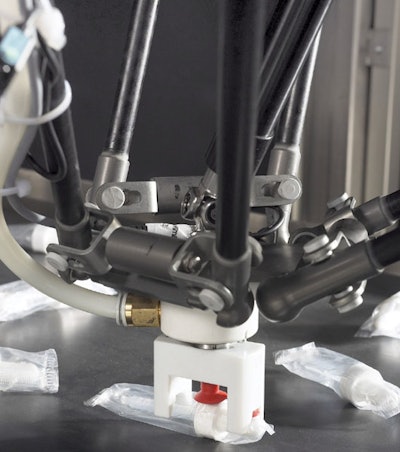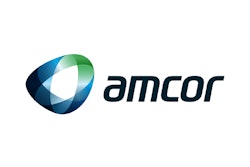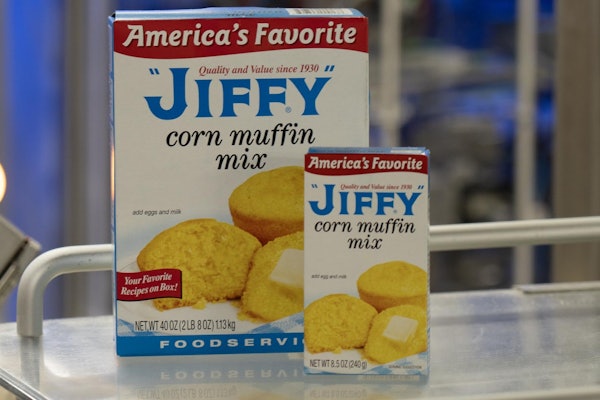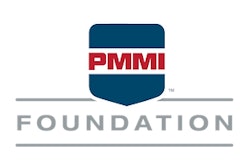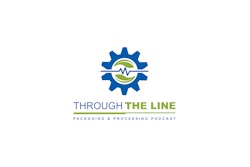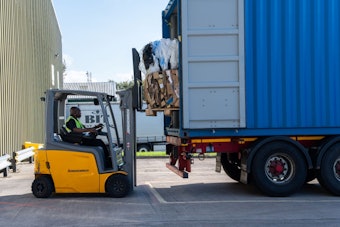Taking prescription drug medications, receiving a biologic-based influenza vaccine, and wearing a medical device following arm surgery remind me that I’m one of the millions of aging baby boomers reportedly driving the development of medical devices, drugs, biologics, and combinations of these, referred to as “combination products.”
These treatment advances bode well for the healthcare/life sciences packaging community. Packaging materials need to offer protection from point of manufacture to the “last mile” where healthcare products reach a patient. Packaging materials must provide barriers for moisture, oxygen, light and heat, and could include overt and/or covert security measures to combat counterfeiting and diversion. Equipment will need to package products more efficiently, be validatable and versatile.
All of this will require people power. “It’s been reported that three of eight jobs in the next 20 years will be in the healthcare field,” says Gerald Finken, president and founder of CSM, a company that provides packaging and labeling services for clinical trials.
Despite this good news, healthcare packagers continue to face daunting challenges, such as satisfying Food and Drug Administration and regulatory demands. Eric Greenberg, attorney-at-law and Packaging World and Healthcare Packaging columnist, provides the following example: “In the FDA Amendments Act of 2007 is a little-noticed section, 913, that adds a new section to the law called ‘pharmaceutical security’ that calls for federal government officials to ‘develop standards and validate effective technologies’ to secure the drug supply chain against ‘counterfeit, diverted, subpotent, substandard, adulterated, misbranded, or expired drugs.’
“A new law that was widely described as strengthening FDA powers over approved drugs contains a spotlight on packaging that, among other things, will soon require unique numbering of individual packages of prescription drug products.” Within the next 21⁄2 years, he says, “the FDA will have to create a system of standardized numerical identifiers for prescription drugs to be applied ‘at the point of manufacturing and repackaging...at the package or pallet level.’ These numbers will allow identification, validation, etc., of the product.”
Beyond legal and regulatory matters, this healthcare packaging forecast also explores a handful of “hot-button” issues and trends. The article will also look at developments and forecasts in pharmaceutical, biologic, and medical device packaging.
Healthcare packaging issues and trends
Sustainability. With so many demands already placed on a pharmaceutical or medical device package, does the package have to be earth-friendly as well? Yes, says Michael Rubenstein, president of Alcan Global Pharmaceutical Packaging. Alcan representatives report that many of their customers are clamoring for more information on this topic.
Innovation and package design. Understandably, manufacturers in the healthcare community allot significant financial resources to product research and development. Sometimes, that means package design innovation is viewed as a luxury. However, developments in drug delivery devices such as inhalers, patches, stick packs, and Target’s prescription drug bottles exemplify innovation. So, too, do package designs for GlaxoSmithKline’s alli starter kits, Barr Pharmaceutical’s oral contraceptive, and VasoActive Pharmaceutical’s over-the-counter topical lotions, as reported by Shelf Impact! editor Jim George (see www.healthcare-packaging.com/go/7).
In the article, George says, “The marketing value of packaging is a largely untapped frontier in over-the-counter pharmaceuticals. Packages delivering cognitive value can support a great product—and drive sales.” When justifying financial investments in package design, George asks, “What is the cost if the packaging for your healthcare product remains purely functional and ignores aesthetics? Consider that if you do nothing, your competitors may well be doing something—and gaining an edge in the battle for shelf supremacy.”
RFID gains. Although the use of radio-frequency identification is in its early stages, “RFID holds great potential for the healthcare industry, and the adoption of the technology is expected to increase significantly owing to the benefits it offers.” That’s according to RFID Opportunities in Healthcare in the U.S., a new $3,900 market-research report from Kalorama.
This year, the RFID market in the U.S. healthcare industry is estimated to be about $297 million, says the report. By 2012, the market’s value is forecast to be $3.1 billion. The report’s executive summary says, “Hospitals are expected to be the frontrunners in terms of investment in RFID technology. Moreover, the adoption of RFID by hospitals in the U.S. was estimated to be 10 percent in 2005 and is expected to increase to 80 percent by 2011.”
Robotics.
Watch for pharmaceutical firms to increase their use of robotics, from processing through packaging functions. AstraZeneca, for example, employs robotics on several of its packaging lines at its plant in Södertälje, Sweden (see packworld.com/view-24175). The company’s use of robotics is likely to continue, according to Lars Siggelin, senior project manager of AstraZeneca’s Global Technical Services. “High flexibility and ‘digital’ changeover,” are among the benefits he sees with robotic packaging. “They’re also more ergonomic, requiring no [manual] lifting or handling of boxes.” He says robotic equipment can be economically justified in that robots are the same price as ‘common’ machines, but have better and more flexible functions. “Robots can be used for other purposes, as they are very general equipment,” he adds.
Automation standards. Dr. Ken Ryan, director of the Center for Automation in Motion Control at Alexandria Technical College (www.camc-online.org), and Shane Loughlin, president of SL Controls, were recently in Ireland investigating a healthcare packaging-related application with a biomedical manufacturer that preferred not to be identified. The application leveraged automation standards to integrate “best-of-breed” equipment. Both were interviewed by Ontheedgeblog.com blogger Keith Campbell in a podcast available at www.packworld.com/view-23530.
Ryan and Loughlin were involved in the OMAC Users Group, a nonprofit organization dedicated to the development and use of open, interoperable control and automation systems technologies for end users, technology providers, and OEMs.
At press time, a new group of pharmaceutical manufacturers, automation companies, and equipment suppliers was in the process of forming to collaborate in developing automation strategies to improve the effectiveness and value of machinery used in the healthcare/life sciences industry. Further details about this group were not yet available.
Pharmaceutical packaging
For years, pharmaceutical products have typically enjoyed healthier profit margins than those of food and beverages, so maximizing packaging line efficiency wasn’t urgent. But as drug patents expire, and less-expensive generic drugs enter the market, this is driving down prices and margins. So it’s understandable why drug manufacturers want to wring out more efficiencies from their packaging lines by employing processes such as Six Sigma, lean manufacturing, and/or Overall Equipment Effectiveness. For more on OEE, visit www.healthcare-packaging.com/go/8.
Looking at the global pharmaceutical market, developed countries in Western Europe, the United States, and Japan will account for nearly three-fourths of the demand for worldwide pharmaceutical packaging, according to The Freedonia Group. Freedonia projected this demand to increase 5.9% per year to more than $34 billion in 2011 in its new study, World Pharmaceutical Packaging.
Freedonia forecast that China will provide the strongest growth opportunities, while India and Brazil “will evolve into fast-growing pharmaceutical packaging markets as drug-producing sectors are upgraded and diversified,” especially generic drugs. Among other findings in the report were the following:
• Easing government-imposed drug price controls and export growth will boost pharmaceutical packaging sales in Japan.
• Prefillable inhalers and prefillable syringes will generate opportunities based on benefits in drug delivery and the introduction of bioengineered medicines. These will help increase global demand for primary pharmaceutical containers 6.5% annually through 2011 to nearly $24 billion.
• The world market for pharmaceutical closures and accessories will grow 4.5% per year to $10.6 billion in 2011, with the largest gains in child-resistant, senior-friendly, and dispensing closures.
The 515-page report is available from The Freedonia Group for $5,800 by e-mailing [email protected].
Biologics packaging
Biologics-based products and combination products appeal to some pharmaceutical firms, for their treatment potential, their financial prospects, and their ability to extend patent protection. “There is a lot more patent protection around these [biologics] molecules,” says Robert Smith, a director at Genzyme in the U.K. “Proteins and biologics are larger molecules than typical drugs.
“The packaging of these products relates to the sensitivities of these proteins, which are also less robust than chemical molecules. And these products have to be frozen or lyophylized [freeze-dried] for a shelf life that’s useful in a commercial sense.” Even then, Smith estimates the shelf life of biologics is typically 12 to 18 months, compared to years for pharmaceutical tablets.
Looking into his crystal ball, the Genzyme professional believes packaging material developments may help extend the shelf life of biologics. “Glass vials have been around for a long time, and I think things like polypropylene and other materials could come into play for biologics.” He also envisions advances in blow/fill/seal technology that could be extended into this field.
Smith says biologics are typically manufactured under aseptic conditions. Developing processes to extend shelf life, he believes, will be an important packaging challenge. And then there’s validation. “Process validation of biologics is probably a more stringent process than for drugs or medical devices,” he believes. He refers not only to the packaging process, but also to operator qualification—demonstrating that they can work in an aseptic environment. “There is some qualification of personnel in all sorts of sterile manufacturing, where you actually qualify the individual to make sure that they are not contaminating the product,” says Smith.
The Center for Biologics Evaluation and Research (CBER) is the center within the FDA that regulates biological products. Its Web site says these products include “vaccines, blood and blood components, somatic cells, gene therapy, tissues, and recombinant therapeutic proteins. In contrast to most drugs that are chemically synthesized and have a known structure, most biologics are complex mixtures that are not easily identified or characterized.
“Biological products, including those manufactured by biotechnology, tend to be heat-sensitive and susceptible to microbial contamination,” the Web site continues. “Therefore, it is necessary to use aseptic principles from initial manufacturing steps, which is also in contrast to most conventional drugs.”
The CBER Web site adds, “Biological products often represent the cutting edge of biomedical research and, in time, may offer the most effective means to treat a variety of medical illnesses and conditions that presently have no other treatments available.”
“With the rapid growth in the biopharmaceutical industry over the past two decades, the number of newly approved biological products has dramatically increased,” says the Intl. Society for Pharmaceutical Engineering (www.ispe.org), a global not-for-profit society of pharmaceutical manufacturing professionals representing some 25,000 members in 90 countries. “In 2005, a record 21 biological products received U.S. Food and Drug Administration approvals, including therapies for the treatment of rheumatoid arthritis, diabetes, cancer, and rare genetic disorders.”
CSM’s Finken offers this input concerning the promise of biologics: “I think it’s about mankind wanting to find the magic bullet.” He adds that one of the challenges in packaging biologics “is that you are dealing with frozen product. If you let it thaw, the potency will drop.” He says biologics are expensive to produce “because the process may involve 30 or 40 steps done in sterile or near-sterile conditions. You can’t heat the product, and many times handling involves keeping the product in liquid nitrogen.”
Medical device packaging
According to Urmila Kishore, “Continuous technological advancements in the medical device market coupled with an aging population provides wide opportunities for growth in the medical device packaging market.” Kishore is the analyst of the study The North American Medical Device Packaging Market from Frost & Sullivan.
The study shows that the market earned revenues of $569 million last year, with that number predicted to rise to $918.8 million by 2013. Among the report’s findings are the following:
• Packaging is an integrated and vital component in the medical device market. The North American medical device packaging market is experiencing steady growth. Despite the growth, this market is also expected to face stiff competition due to the cost-reduction pressure created by device manufacturers.
• The scientific and technological breakthroughs to improve health and lengthen the average life span have accelerated the pace of medical invention, resulting in a plethora of new medical devices with advanced features and superior performance properties. Package manufacturers are encouraged to respond to new product requirements by employing advanced technologies and materials.
• Disposable medical devices, including surgical supplies, are extremely popular. “This market is expected to grow at the rate of 23-percent through 2011, as increases in the number of surgeries have heightened the concern over postoperative infection,” explains Kishore. “The demand for implants is anticipated to encourage the use of rigid packaging materials such as trays, which is likely to boost the revenues of rigid packagers.”
• Medical device packagers face a challenge in coping with emerging trends. Says Kishore, “The introduction of combinational drug delivery devices is posing a major challenge to packagers to come up with new, innovative packaging that suits the products.”
RELATED ARTICLES
For more on healthcare packaging innovation and design from Shelf Impact! editor Jim George, see www.healthcare-packaging.com/go/7.
For more on Overall Equipment Effectiveness (OEE), see healthcare-packaging.com/go/8.
For more on AstraZeneca’s robotic packaging lines, see packworld.com/view-24175.
VIDEO View AstraZeneca’s robotic packaging lines in action at packworld.com/view-24094.
PODCAST Listen to an interview with Dr. Ken Ryan and Shane Loughlin by OnTheEdgeBlog.com’s Keith Campbell at packworld.com/view-23530.
